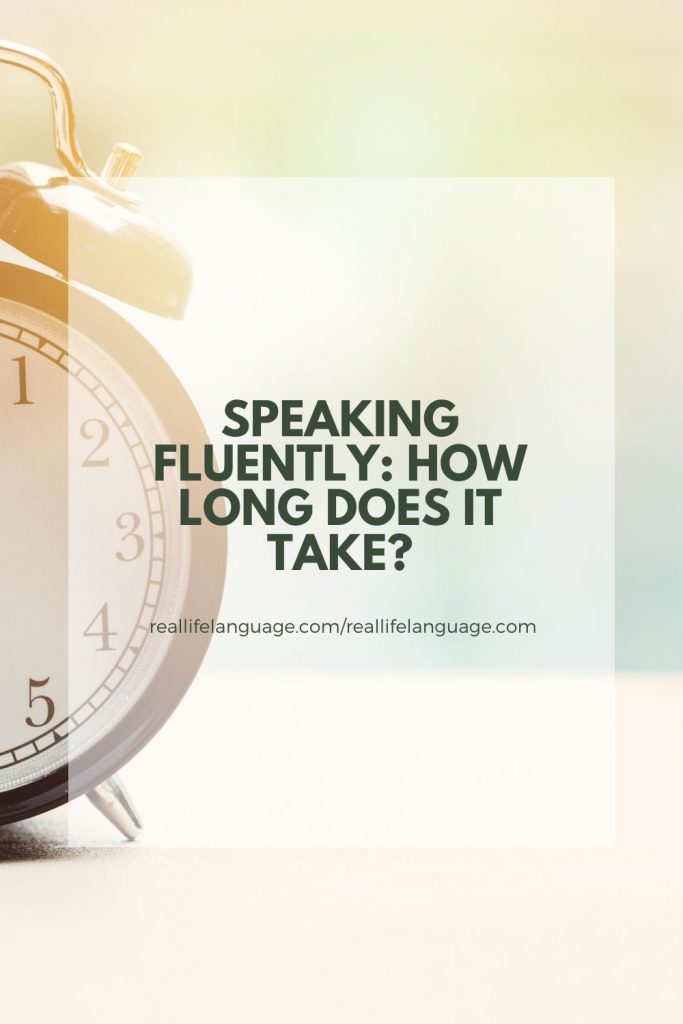Speaking fluently: how long does it take?
I have been teaching and learning languages for a LONG time. I double majored in college in Foreign Languages and Theater Arts, and then earned an MA in the Teaching of Languages. I have taught in academic institutions for nearly three decades ranging from primary level language immersion where content is taught in other languages, university language courses, middle and high school and reading.
One of the most valuable activities I have done in my professional development has been certification in language proficiency rating. In it, you learn to rate levels of skill in languages. As you learn, you get to see the research behind how long it takes to master different categories of languages.
Learning a language takes time. For English speakers, learning some languages takes less time than others. You can use the chart to see how long it will take to reach a B2/C1/Intermediate- high/Advanced-low level in different languages. You can also use the Path to Fluency graphic below as another way to measure and represent goals. This same level would be represented by the bubble “paragraphs”.

While the process is not scientific, you can use the infographic to help plan how long you will learn to invest to meet your language learning goals. Please also note that these times were based on students going through the Foreign Service Institute.
Category 1 is estimated between 575-600 hours, Category 2 is estimated by some to be 750 hours, Category 3 at 900 hours, and Category 4 at 1100 hours. Many of these people have already learned at least one other language (experienced in the short cuts) and are studying the language full time. Some estimates for people not fitting this profile can be up to 1000 hours for Category 1, 2000 hours for Category 2 and 3000 hours for the upper categories.
Also, note that you may find different classifications of language difficulty from different sources. This is a general guide to give you an idea of how long you can expect to need to attain fluency in your target language. Basically, the more different from English your target language is, the longer it will take to master.
I also want to point out a bit about their learner profile at the FSI. They are solely focused on languages as they prepare for their next stint abroad. The people I know who have gone through this program tend to be exceptionally good students in any subject. They also have very specific career goals that can be met with successful completion of these programs. Bottom line: they are working towards their goals full time and intensely. This is not realistic for most people. However, I love the general guidelines for time they provide for learners.
With regard to time, it also bears pointing out that time and progress looks different at the different levels of proficiency. When you are in Novice/A, your progress can be rapid. Expect for it to take twice as long to move to through Intermediate/B. Noticeable progress takes at least three times as long in Advanced/C. Knowing this from the start can help you have realistic goals.
Another factor that I see as important to know on the journey to speaking fluently is the periods of time you do invest. In Novice/A, I wouldn’t do a period longer than 30 minutes. Short, sweet and frequent time periods work best. Intermediates can work for longer without experiencing mental fatigue. Time periods for Advanced/C can be much longer. Also knowing this can help you plan your time according to your current proficiency level.
Start your journey on the road to speaking fluently. I created this self-assessment workbook based on my training, years of experience as both a language learner and teacher and professional development. It has a free downloadable time tracker to help you track the time you invest on your journey:
https://reallifelanguage.lpages.co/self-assessment-workbook/
